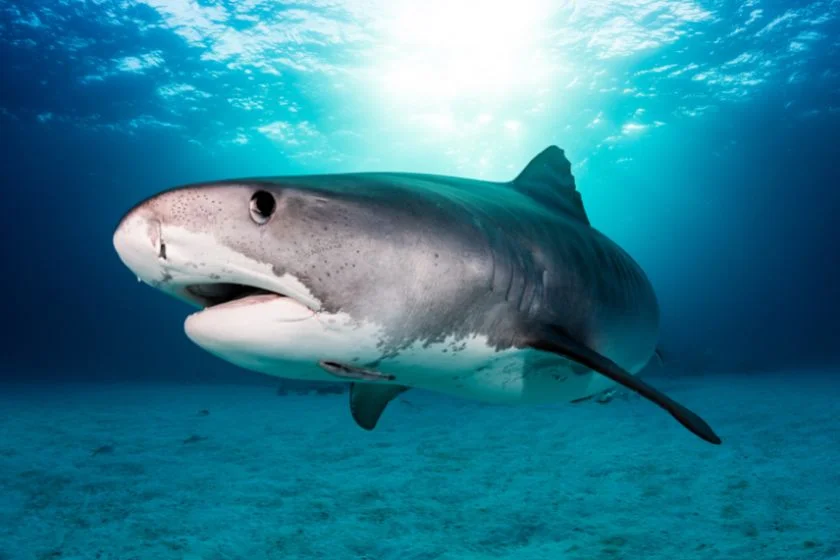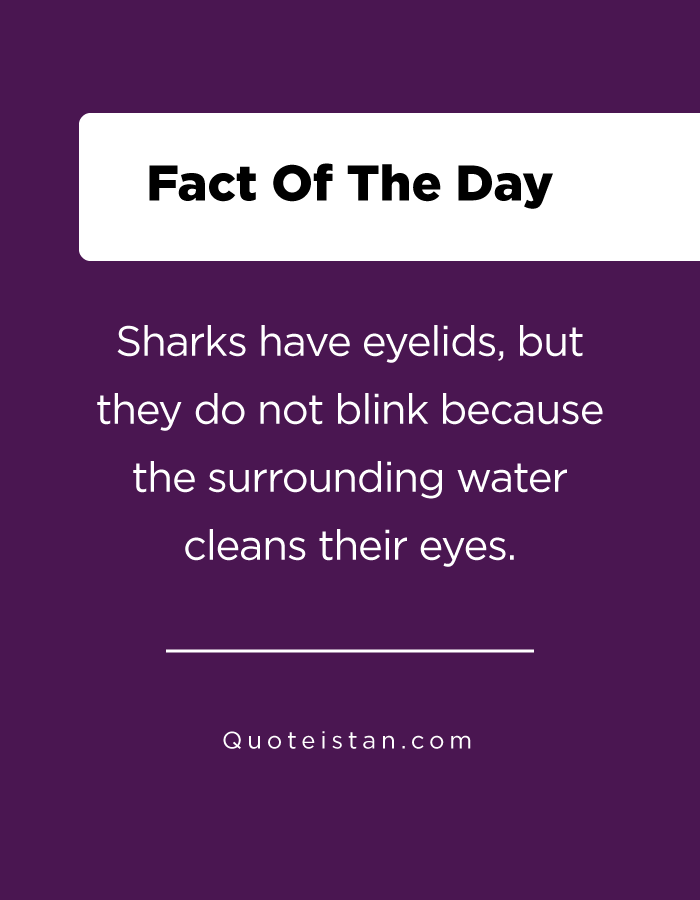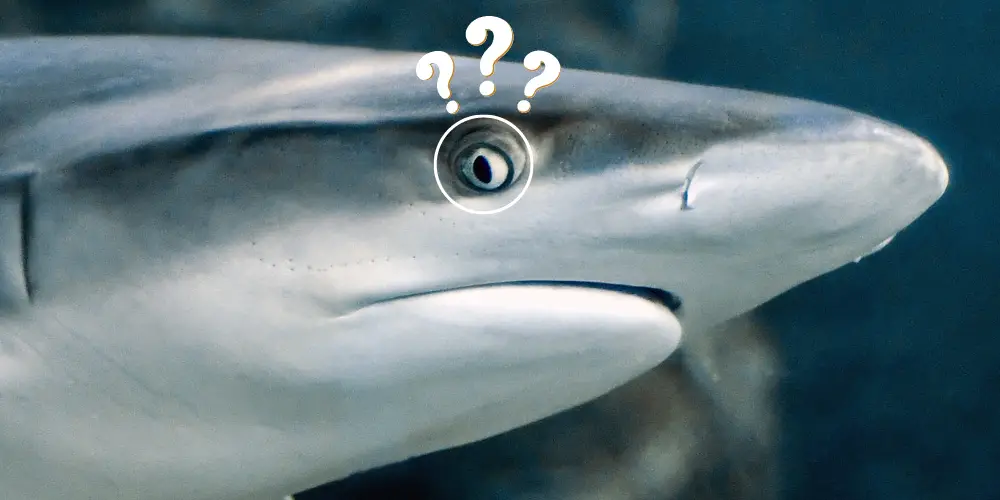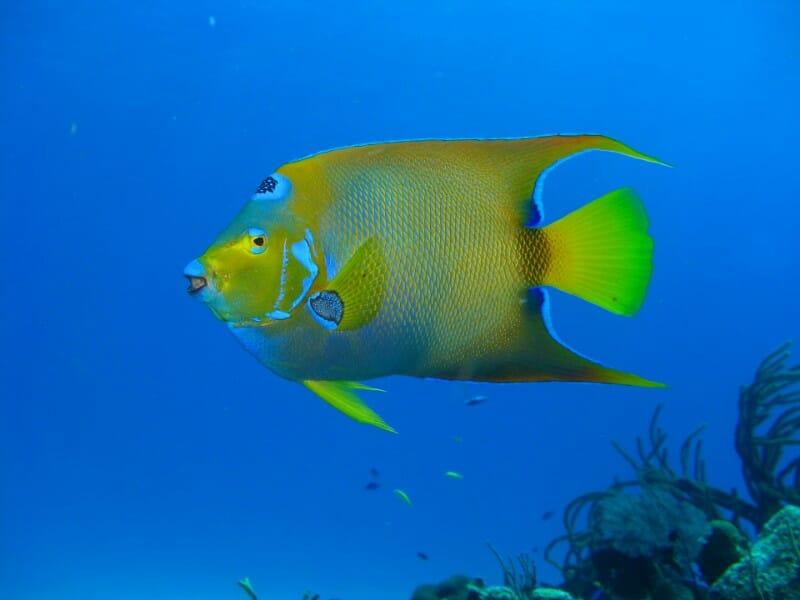
What is the number of eyelids some sharks have? Opera Residences
Sharks have eyelids because it helps them protect their eyes from abrasion, moisten it, and also to cover the eyes while hunting and also when the shark is being attacked. They have skin eyelids that can cover their eyes. The color of the upper eyelids is the same as the color of the snout. Sharks also have a full nictitating membrane in the.

Great white sharks do not have eyelids. Their eyes roll into the back of their heads when
A shark's eye is similar to the eye of other vertebrates, with many parts that we'd recognize: a lens, a retina, an iris and a cornea. One very important feature of shark sight is the tapetum lucidum, which is how sharks are able to see in the low light created by murky or deep waters.

Sharks are the only fish that have eyelids! Which begs the question, do fish sleep? 🐟🐠 Research
Spines Gills Aerodynamic Bodies Shark Spiracle Body Shape and Coloration Internal Shark Anatomy Body Cavity Shark Digestion Shark Skeleton Mouth, Teeth, And Sense Of Taste Ampullae of Lorenzini, Lateral Line, And Sense Of Sound Eyes, Eyelids, and Eyesight Powerful Muscles Nostrils And Sense Of Smell External Shark Anatomy Shark Skin

Do Sharks Blink/Close Their Eyes? Shark Keeper
Yes, all sharks have eyelids, but they serve more as a defense than to keep the water out of their eyes and clean. Many species, including tiger sharks and hammerhead sharks, have a third eyelid called a nictitating membrane that allows them to blink their eyes. Contents show Do Sharks Have Eyelids?

Freaky Friday Fact! Did you know Sharks are the only fish that have eyelids? have a great
Sharks have upper and lower eyelids as well, but they are unable to move them. They do, however, blink distinctively. So, do they have the ability to blink both eyes? Sharks have the ability to blink with both eyes. When they are feeding or hunting, a unique membrane shields their eyes.

Shark Eyesight SHARK ACADEMY YouTube
Sharks have eyelids, but they don't blink; they close their eyelids to protect their eyes from damage when fighting or feeding. But their eyelids don't close all the way. In addition, some species have a clear membrane (the nictitating membrane), which slides down to protect the eye in dicey situations.

Do Sharks Have Eyelids? Do They Blink Their Eyes?
#9 Do Sharks have Eyelids? All shark species have at least two eyelids, and some have a third in the form of a nictitating membrane. The upper and lower eyelids aren't mobile like ours, but the nictitating membrane is "a highly mobile structure," capable of providing "rapid and efficient protection against abrasion."

Did You Know Sharks Are The Only Fish That Have Eyelids Dolphin Quotes LowGif
No, sharks do not have eyelids. Instead, they have a thin membrane (called the nictitating membrane) that protects their eyes and keeps them moist while swimming. This membrane is transparent and can be drawn across the eye to block vision temporarily when necessary, although it does not completely cover the eye as an eyelid would.
Do Sharks Have Eyelids Why, Types, How Many, Several Facts Animal Queries
The nictitating membrane (from Latin nictare, to blink) is a transparent or translucent third eyelid present in some animals that can be drawn across the eye from the medial canthus to protect and moisten it while maintaining vision. All Anura [1] (tailless amphibians), and some reptiles, birds, and sharks have full nictitating membranes; in.

Sharks have eyelids, but they do not blink because the surrounding water cleans their eyes.
Japan World's Biggest Shark Has Teeth on Its Eyeballs, Scientists Discover Jun 30, 2020 at 7:38 AM EDT By Hannah Osborne Science Editor The biggest sharks in the world have tiny teeth all.

Nibble Sharks have upper and lower eyelids, but these lids… Flickr
Sharks have two main eyelid structures: one for feeding and fighting and another called the nictitating membrane. Only sharks with the nictitating membrane can blink their eyes. Sharks blink differently from humans and other animals with functional eyelids. Sharks blink to defend themselves and protect their eyes.

Sharks have eyelids, but they do not blink because the surrounding water cleans their eyes
Sharks have eyelids, just like human beings and all other mammals. From a cursory glance, it might look like sharks do not have eyelids. However, that's not the truth. They have upper and lower eyelids that do not come together or close all the way since sharks do not need to blink the way humans do.

Do Sharks Have Eyelids Why, Types, How Many, Several Facts Animal Queries
Sharks have eyelids, but they function differently from human eyelids. Instead of blinking, sharks use a nictitating membrane, also known as a "third eyelid," to protect their eyes and maintain vision underwater. Shark eyelids are a fascinating topic that delves into these incredible ocean predators' intricate anatomy and survival strategies.

Do Sharks Have Eyelids? ( The EyeOpening Truth )
Contrary to popular belief, sharks have very good eyesight. Are Sharks Blind? Sharks are far from blind, although they do struggle to distinguish between colors. Their eye structure is very similar to the human eye structure, as they contain a cornea, lens, retina, deep blue iris, and pupil structures.

Why don’t fish have eyelids ? Cousteau
Some species have an eyelid-like structure called a nictitating membrane. The nictitating membrane protects the eye from being injured by thrashing prey while the shark is feeding. Eye size and position vary, depending on the particular habitat or behavior of the species. In general, deep-water sharks have bigger eyes than shallow-water sharks.

Discover Ocean on Instagram “Via sharks DidYouKnow Sharks have eyelids, but they don't blink
07/17/2023 by Sehrish Great White Sharks have amazing eyes! They are able to navigate, spot prey from afar, and even communicate without words. Rods and cones, which are specialized cells, help them to see in low light conditions - like during dawn and dusk. Plus, their horizontal pupils reduce glare from above and below water.